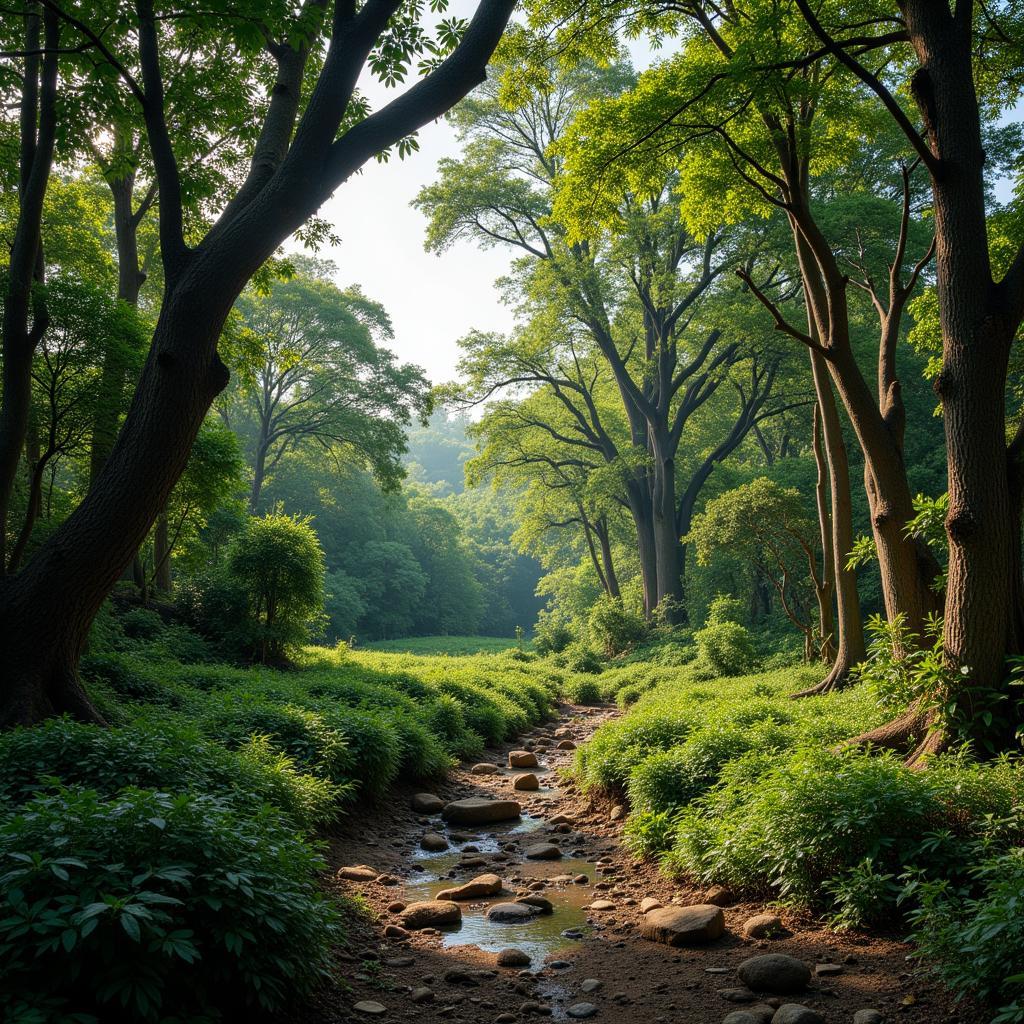African Bongos: The Elusive Drummers of the Forest
The rhythmic beating of the African bongos, echoing through the dense rainforests, signals the presence of one of the continent’s most striking and elusive animals. These large, reddish-brown antelopes, with their characteristic white stripes and spiraled horns, are a true testament to the beauty and diversity of African wildlife. But their story is not just one of aesthetics; it’s a tale of resilience, adaptation, and the delicate balance of life in one of the world’s most threatened ecosystems.
A Symphony of Stripes: Unveiling the Bongo’s Beauty
Standing tall amidst the dappled sunlight filtering through the rainforest canopy, the African antelope bongo is a sight to behold. Their rich, chestnut coats are adorned with 10 to 15 vertical white stripes, unique to each individual, much like a human fingerprint. These stripes serve as a brilliant form of camouflage, breaking up their outline amidst the vertical lines of the forest undergrowth.
Both males and females possess horns, a rarity among antelope species. The horns, long and spiraled, can grow up to 40 inches in length and are used for both defense and display during mating rituals. Their large, rounded ears are highly sensitive, picking up the slightest sound, and their keen sense of smell alerts them to potential danger.
The Bongo’s Forest Domain: A Realm Under Threat
African bongos are highly specialized for life in the rainforest. They are found in scattered populations across Central and East Africa, favoring areas with dense undergrowth, access to water, and an abundance of their preferred foods, which include leaves, shoots, fruits, and bark. Their powerful legs allow them to navigate the challenging terrain with surprising agility, and their reddish-brown coats provide excellent camouflage in the low-light conditions of the forest floor.
 African Bongo Habitat
African Bongo Habitat
However, these majestic creatures are facing an increasingly uncertain future. Habitat loss due to deforestation, driven by agricultural expansion and logging, is the most significant threat to their survival. Coupled with poaching and disease, these pressures have resulted in a decline in bongo populations, leading to their classification as a “Near Threatened” species by the International Union for Conservation of Nature (IUCN).
Protecting the Rhythm of the Forest: Conservation Efforts
Numerous conservation initiatives are underway to protect these magnificent creatures and their dwindling rainforest homes. These efforts focus on:
- Habitat Protection and Restoration: Establishing protected areas and wildlife corridors to connect fragmented forests is crucial.
- Anti-Poaching Measures: Strengthening law enforcement and combating the illegal wildlife trade are essential to curb poaching.
- Community-Based Conservation: Engaging local communities in conservation efforts by providing sustainable livelihoods and raising awareness about the importance of bongo conservation is key.
- Research and Monitoring: Conducting research to better understand bongo ecology, behavior, and the impact of threats is vital for developing effective conservation strategies.
The African Bongo: A Symbol of Hope and Resilience
The African bongo, with its striking appearance and ability to thrive in one of the world’s most challenging environments, stands as a symbol of the incredible biodiversity found across the African continent. By supporting conservation efforts and advocating for the protection of their rainforest habitat, we can ensure that the rhythmic beating of their hooves continues to echo through the forests for generations to come.
FAQs About African Bongos
What is the lifespan of an African bongo?
In the wild, African bongos typically live for 10 to 15 years. However, in captivity, they can live up to 20 years with proper care.
How many African bongos are left in the wild?
While exact numbers are difficult to determine, it is estimated that fewer than 10,000 African bongos remain in the wild.
What is being done to help conserve African bongos?
Conservation efforts include habitat protection, anti-poaching measures, community-based conservation programs, and ongoing research to better understand and protect these elusive creatures.
Do you want to learn more about the fascinating wildlife of Africa? Explore these related articles:
- African Forest Landscape: Delve deeper into the diverse ecosystems that support a wealth of plant and animal life.
- African Bongo Cat: Discover the unique feline species that shares a name and some striking similarities with the bongo antelope.
Need more information about African bongos or want to support our conservation efforts? Contact us at +255768904061, email us at kaka.mag@gmail.com, or visit us in Mbarali DC Mawindi, Kangaga, Tanzania. Our dedicated team is available 24/7 to assist you.
